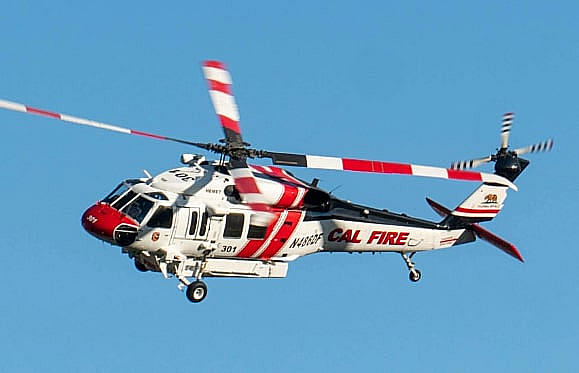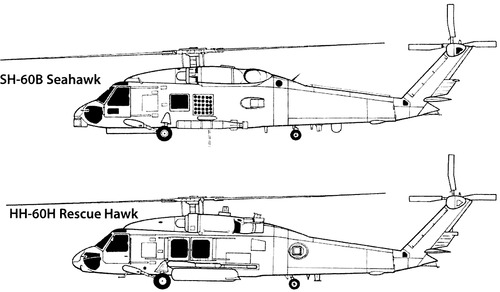Sikorsky S 70: Enhancing Helicopter Effectiveness and Flexibility
Sikorsky S 70: Enhancing Helicopter Effectiveness and Flexibility
Blog Article
High-Performance Multi-Role Rotorcraft Featuring Advanced Cabin Technologies and Integrated Sensing Unit Equipments
The realm of rotorcraft technology has actually seen remarkable advancements in recent times, particularly in the world of high-performance multi-role rotorcraft equipped with innovative cabin technologies and perfectly integrated sensor systems. In the adhering to discussion, we will certainly check out the advancement of rotorcraft innovation, dive into the realm of innovative cockpit innovations, and check out the effects of incorporated sensing unit systems on the operational adaptability and performance of modern rotorcraft.
Development of Rotorcraft Technology
The evolution of rotorcraft innovation has actually been noted by significant advancements in the rules of aerodynamics, materials, and propulsion systems, forming the capabilities and performance of modern-day rotorcraft. Aerodynamic improvements have improved the effectiveness and maneuverability of rotorcraft, permitting enhanced speed, agility, and security during trip (sikorsky s 70). Developments in products, such as making use of composite materials and progressed alloys, have actually resulted in lighter yet stronger rotorcraft frameworks, enhancing total performance and longevity. Furthermore, improvements in propulsion systems, including a lot more powerful engines and cutting-edge propulsion innovations, have enabled rotorcraft to attain greater altitudes, faster rates, and greater payloads.
These developments have not only changed the capacities of rotorcraft but have actually also broadened their applications throughout numerous industries, including armed forces, business, and emergency services. The continuous advancement of rotorcraft modern technology remains to drive technology in the field, pushing the borders of what is possible and forming the future of upright trip.
Advanced Cabin Innovations
Structure upon the foundational innovations in aerodynamics, products, and propulsion systems, the world of rotorcraft innovation currently moves focus towards pioneering Advanced Cockpit Innovations. The combination of cutting-edge modern technologies within the cabin atmosphere plays a critical function in enhancing the operational abilities, safety and security, and effectiveness of modern rotorcraft. sikorsky s 70. Advanced Cockpit Innovations incorporate a vast array of features created to offer pilots with improved situational awareness, streamlined information management, and instinctive control user interfaces
Among the essential advancements in cabin style is the application of glass cabins, which replace standard analog assesses with high-resolution screens. These digital systems use adjustable designs, real-time information assimilation, and boosted readability, enabling pilots to access critical info at a glimpse. In addition, progressed avionics systems, such as fly-by-wire controls and augmented truth display screens, are transforming exactly how pilots communicate with the airplane, enabling specific control and improved decision-making capacities.


Including sophisticated cabin developments not just boosts pilot efficiency but likewise adds to total mission efficiency and security in intricate operational settings. By leveraging advanced modern technologies within the cabin, rotorcraft suppliers are establishing brand-new criteria for functional excellence and objective success.
Integrated Sensor Solutions
With the advancement of rotorcraft technology, the combination of innovative Integrated Sensing unit Solution has actually become vital in improving functional effectiveness and safety and security. These Integrated Sensing unit Solutions encompass a vast array of modern technologies that offer essential data for different functions such as navigation, monitoring, targeting, and ecological tracking. By effortlessly integrating sensing units like radars, cameras, lidar, and infrared systems into rotorcraft, drivers can profit from boosted situational awareness, boosted objective capabilities, and minimized pilot workload.
One key benefit of Integrated Sensor Solutions is their capacity to collect real-time data and give workable insights to pilots and objective operators. For instance, progressed radar systems can spot and track targets over cross countries, enabling for very early danger detection and efficient response planning. Additionally, integrating electro-optical and infrared video cameras makes it possible for rotorcraft to carry out reconnaissance and monitoring goals with accuracy and accuracy.
In significance, the assimilation of sophisticated sensing unit innovations right into rotorcraft not only enhances functional performance yet also adds considerably to overall goal success and crew safety and security. As rotorcraft remain to advance, the role of Integrated Sensing unit Systems will certainly stay at the forefront of innovation in the aerospace industry.
Functional Versatility and Efficiency
Enhancing operational adaptability and effectiveness in rotorcraft is a natural development from the integration of advanced Integrated Sensor Solutions. By leveraging the information and insights offered by these cutting-edge sensing unit systems, rotorcraft can maximize their performance across different missions and atmospheres.
Functional flexibility encompasses the capability of rotorcraft to adapt to different duties and situations effectively. With advanced cockpit innovations and incorporated sensing unit systems, rotorcraft can flawlessly transition between jobs such as search and rescue, clinical discharge, monitoring, and a lot more. This flexibility improves the rotorcraft's ability to fulfill varied functional needs without needing comprehensive reconfiguration.
Effectiveness in rotorcraft operations is critical for taking full advantage of goal performance and source application. Integrated sensor systems play an essential function in enhancing operational efficiency by providing real-time data on weather, surface mapping, target tracking, and extra. This data makes it possible for pilots to make informed decisions swiftly, enhance flight courses, save fuel, and enhance total goal performance.
Effect On Modern Aviation Procedures

Moreover, the assimilation of innovative sensing units helps with enhanced goal preparation and execution, making it possible for rotorcraft to carry out a large range of tasks with improved accuracy. From search and rescue operations to aerial firefighting and law enforcement goals, the capacities of modern-day rotorcraft outfitted with sophisticated cabin modern technologies and incorporated sensor systems are unmatched.
In addition, the influence of these improvements expands beyond operational effectiveness to cost-effectiveness and sustainability. By enhancing trip courses, fuel intake, and maintenance timetables, redirected here high-performance rotorcraft geared up with sophisticated cockpit innovations and sensing units add to lowering functional expenses and environmental effect, making them indispensable possessions in contemporary aviation procedures.
Conclusion
Finally, the high-performance multi-role rotorcraft with advanced cabin modern technologies and integrated sensor systems represents a significant development in aeronautics technology. These innovations improve operational flexibility and efficiency, ultimately impacting modern-day aviation operations in a positive means. The combination of these sophisticated innovations permits for boosted capacities and performance in different goal scenarios, showcasing the continued innovation of rotorcraft technology in the aviation industry.
The world of rotorcraft modern technology has seen notable innovations in current times, particularly in the realm of high-performance multi-role rotorcraft furnished with innovative cockpit innovations and perfectly incorporated sensor systems. From improved objective convenience to boosted operational effectiveness, the convergence of sophisticated cockpit technologies and incorporated sensing go right here unit systems has actually ushered in a new era of possibilities for rotorcraft applications. In the following conversation, we will certainly explore the advancement of rotorcraft innovation, dig into More Help the realm of advanced cabin technologies, and check out the ramifications of integrated sensing unit systems on the functional adaptability and efficiency of modern-day rotorcraft.

Report this page